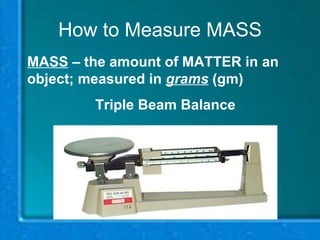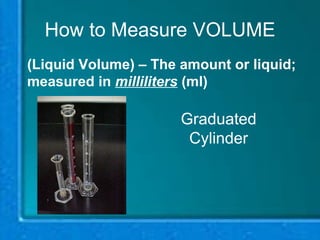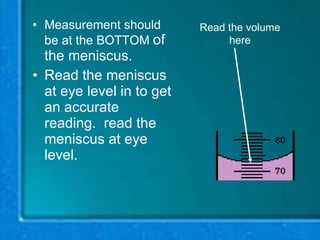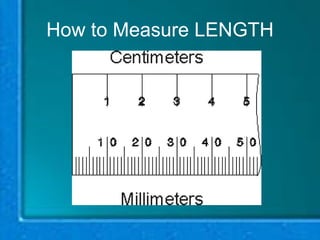Measuring[1]
- 1. Measuring How to be PRECISE and ACCURATE
- 2. How to Measure MASS MASS ®C the amount of MATTER in an object; measured in grams (gm)? Triple Beam Balance
- 3. ?
- 4. Place an object on the pan. ∫›∫›fl£ the rider with the largest mass along its beam until the pointer drops below zero. Move it back one notch. Repeat the process on each beam until the pointer stays at zero. Add the masses on each beam to find the mass of the object.
- 5. ?
- 6. How to Measure VOLUME (Liquid Volume) ®C The amount or liquid; measured in milliliters (ml)? Graduated Cylinder
- 7. ?
- 8. A meniscus is the curve of the surface of the water in a graduated cylinder. Water "sticks" to the walls of the graduated cylinder, but only on the sides and not the middle.? When you look at the surface, the water level is not straight ®C it°Øs curved like a smile.?
- 9. Measurement should be at the BOTTOM of the meniscus. Read the meniscus at eye level in to get an accurate reading.? read the meniscus at eye level. Read the volume here
- 10. How to Measure LENGTH
- 11. Most metric rulers have lines indicating centimeters and millimeters. The centimeter lines are the longer, numbered lines. The shorter lines are millimeter lines. When you use a metric ruler, line up the 0-centimeter mark with the end of the object being measured.
- 12. ?











